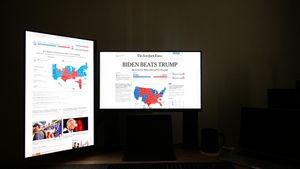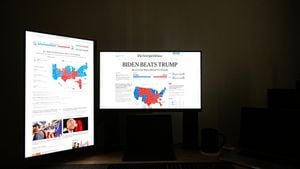Young people in England are increasingly studying fewer subjects when it’s time to choose their A-levels, marking a significant shift over the past two decades. This worrying trend, highlighted by recent reports, suggests students may be limiting their future opportunities by restricting their academic choices.
The National Foundation for Educational Research (NFER) has released findings indicating the sharpest decline is seen within humanities and arts subjects. Since 2015/16, the choice of subjects has narrowed, and the impacts of these decisions could resonate far beyond school.
Numbers show the percentage of students taking humanities has plummeted from 56% to just 38% between 2015 and 2022. Subjects like history and English literature have witnessed dramatic falls, with history enrollments decreasing from 21% to 15%.
The shift is speculated to be linked to reforms introduced two decades ago, particularly the decoupling of AS and A-levels. This change has altered the way students approach their education, pushing them toward greater specialization at the expense of broader subject engagement.
Indeed, Michael Scott, NFER’s senior economist and lead author of the report, noted, "Young people are studying a narrower range of subjects, which is probably due, at least in part, to reforms introduced over the last two decades." This narrowing could influence both the skills they take with them and their overall well-being.
The stark report was released right as results day approaches for students across England, Wales, and Northern Ireland. There's increasing alarm about how this streamlined choice might restrict career pathways and future educational prospects.
Creative subjects and languages appear to be particularly affected. For example, the number of students taking subjects like French has dropped from 78% to just 54% since 2009/10.
Sadly, many students are opting to limit their A-levels to one specific category, often aligning closely with science, technology, engineering, and mathematics (STEM). The data reveals the proportion of students taking solely STEM subjects has jumped from 21% to 35% from 2015 to 2022.
Molly Morgan Jones, director of policy at the British Academy, expressed concerns about this shift. "Failure to address this decline will have knock-on effects, not only for these subjects in UK universities but also on the skills young people take out to the workforce and the wider world," she emphasized.
This trend is sparking debate about the future of education and career readiness for English students. With many committed to STEM exclusively, is there still room for the arts and humanities?
Critics of the current educational policies are laying blame on recent government reforms. They claim these measures have contributed to the steep decline of flexibility within academic choices.
The Education Secretary, Bridget Phillipson, pledged to narrow the gap between educational choices and skills needed for the workforce. This commitment aims to restore balance to the curriculum, ensuring it caters to various interests and industry requirements.
Despite current challenges, there are signs of hope for students. The Department for Education is planning to undertake curriculum reforms, intended to revitalize and diversify educational pathways once again.
Features such as work placements and increased collaboration with industries are being discussed as methods to enrich post-16 education. Stakeholders believe these changes could help students acquire broader skills and experience before entering the workforce.
Still, many educators feel the momentum is slow and insufficient. "We need to act fast to prevent future generations from graduating without the skills and knowledge they need to thrive," warned Niamh Sweeney, Deputy General Secretary of the National Education Union.
Another factor behind the narrowing curriculum is the recent introduction of the English Baccalaureate (EBacc), which has inadvertently influenced subject selection pre-16. Critics argue this added pressure is hindering students' biology, chemistry, and creativity.
With university applications opening shortly after results day, applicants and institutions alike are audiences to this pivotal moment. How these students choose their courses might shape not just their individual futures but the sectors they work within.
At the heart of this situation lies the moral question of educational breadth and student engagement. Should schools champion diverse course options or channel students toward specific fields to comply with emerging job market trends?
New proposals for educational reform will need to weigh the importance of diverse talents against the realities of career preparedness. Striking this balance is key to fostering well-rounded individuals ready for future challenges.
The ripple effects of choosing A-levels will echo throughout universities, workplaces, and, eventually, society. To what extent will the narrowing choices shape the cultural and intellectual fabric of future generations?
Successive governments have committed to high standards of education, but the current data raises questions about who is truly benefiting from these choices. With student wellbeing and preparedness under scrutiny, there is pressure to make impactful changes.
For now, students await their results. The decisions they made about their subjects will soon be put to the test, and as they step forth, the future of English education hangs delicately in the balance.



